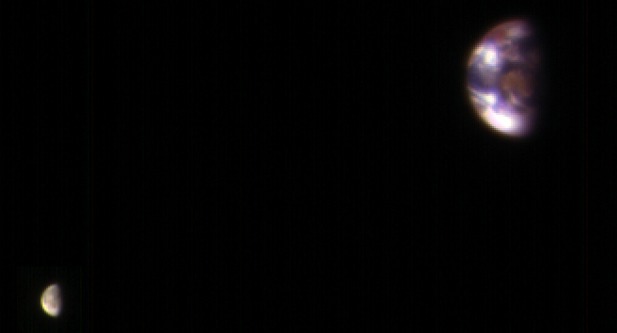 Earth and Moon seen from Mars in November 2016
Earth and Moon seen from Mars in November 2016A University of Arizona camera circling Mars turned its eye toward its home planet in November and got a stunning image of Earth and the moon.
The composite photo, made up of four separate images and stitched together by the camera's principal investigator, Alfred McEwen, made the rounds on social media last week.
The HiRISE camera, aboard the Mars Reconnaissance Orbiter, has taken more than 48,000 images of the Martian landscape since 2006. The spacecraft orbits 125 to 250 miles above the planet.
Occasionally, its Earth-based operators need to calibrate the instrument. They do that by turning the camera back toward the moon. UA planetary scientist Kristin Block helped to plan the activity and said the two bodies reflect the sun's light differently.
“We planned a handful of images specifically so that we could get a couple with the moon optimized and set so the brightness worked specifically for the moon, and a couple so the brightness worked specifically for the Earth so that we could get that nice balanced image that you see,” Block said.
"The actual point of interest is the moon rather than the Earth. The Earth is a happy bonus in that picture," she said.
The HiRISE camera has documented flowing water on the planet, observed dust devils on the surface, found new impacts exposing ice under the surface, noted linear gullies on sand dunes from sliding blocks of dry ice, imaged rovers traversing the planet and potential landing sites for future Mars missions and caught the UA-led Phoenix Mars lander descending under its parachute in 2008.

By submitting your comments, you hereby give AZPM the right to post your comments and potentially use them in any other form of media operated by this institution.